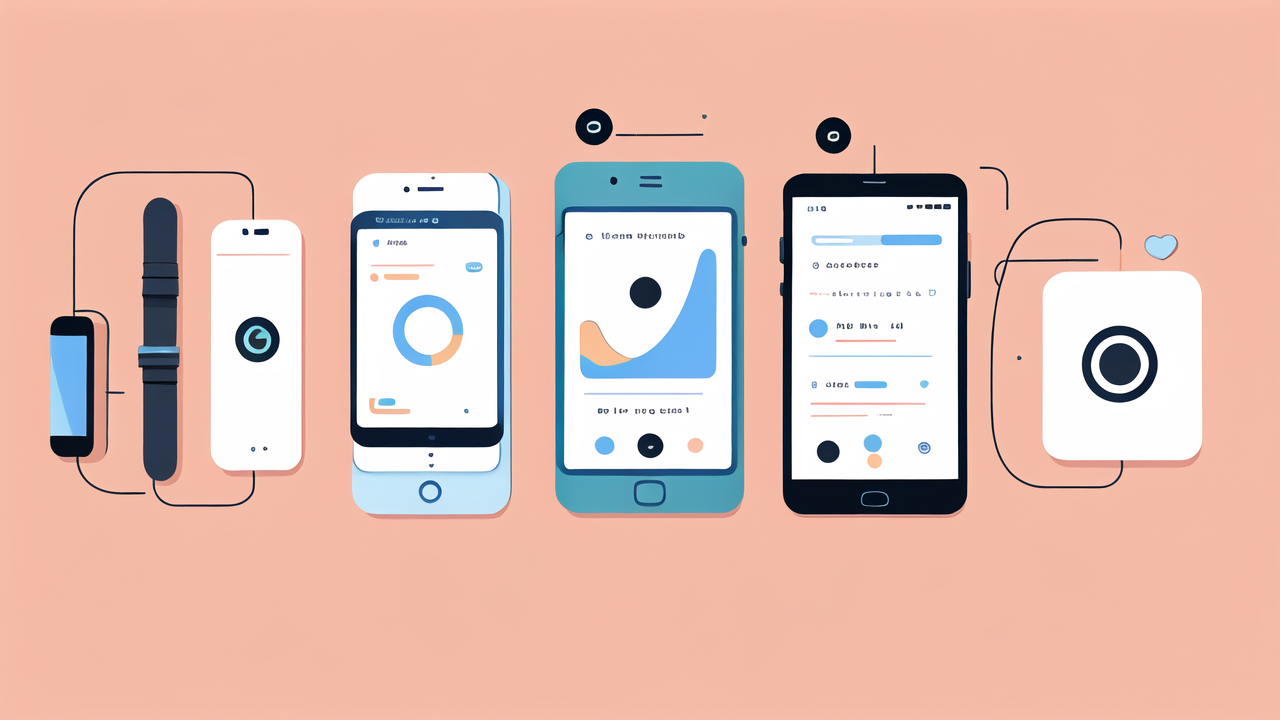The Evolution of Smart Bands in the Fashion Industry
Pioneering Smart Band Startups and Market Disruption
Smart bands have come a long way since their inception. Early startups like Fitbit and Jawbone led the charge. They introduced simple step counters and sleep trackers. These devices quickly gained popularity among health-conscious consumers.

As the market grew, tech giants took notice. Apple and Samsung entered the scene with their own smart bands. This disrupted the market and pushed innovation further. Smaller companies had to adapt or risk being left behind.
The competition led to rapid advancements in smart band technology. Features expanded beyond basic tracking. Heart rate monitoring, GPS, and smartphone notifications became standard. This evolution transformed smart bands from niche gadgets to mainstream accessories.
Milestones in Smart Band Technology and Adoption
Several key milestones marked the growth of smart bands. The introduction of always-on displays was a game-changer. It allowed users to check information without pressing buttons. Waterproofing made smart bands more versatile and durable.
Battery life improvements were crucial. Early models needed frequent charging. Now, many smart bands can last a week or more on a single charge. This made them more convenient for everyday use.
Adoption rates soared as prices dropped and features improved. Schools started using smart bands in physical education classes. Workplaces incorporated them into wellness programs. This widespread use helped smart bands become a common sight in America.
How Smart Bands are Changing Consumer Behavior
Smart bands have significantly impacted how people approach health and fitness. They've made users more aware of their daily activity levels. Many now strive to hit step goals or close activity rings on their devices.
Sleep tracking features have led to increased focus on sleep quality. Users adjust their bedtime routines based on data from their smart bands. This has sparked conversations about the importance of good sleep habits.
Smart bands have also changed how people interact with their smartphones. Notifications on the wrist reduce the need to constantly check phones. This subtle shift has implications for digital etiquette and productivity.
The Intersection of Fashion and Technology: High-Tech Apparel
Advanced Fabrics and Materials in Wearable Tech
The world of high-tech apparel is expanding rapidly. Researchers are developing fabrics with built-in sensors. These can monitor vital signs and environmental conditions. Some materials can even change color or texture based on external factors.

Conductive threads are being woven into clothes. They allow for seamless integration of electronic components. This opens up possibilities for heated jackets, light-up dresses, and more.
Nanotech coatings are making fabrics more durable and functional. They can repel water, resist stains, or even neutralize odors. These innovations are blurring the lines between fashion and technology.
The Role of Wearables in Fitness and Health Monitoring
Wearable technology is revolutionizing personal health management. Smart clothing can track more data than wrist-worn devices. Compression shirts can monitor heart rate and breathing patterns with high accuracy.
Smart socks help runners analyze their gait and prevent injuries. Yoga pants with built-in haptic feedback can guide users through poses. These advancements are making professional-level health insights accessible to everyone.
Continuous health monitoring is becoming a reality. Smart underwear can track stress levels throughout the day. This data helps users make informed decisions about their lifestyle and well-being.
Privacy and Ethical Considerations in High-Tech Fashion
As wearable tech collects more personal data, privacy concerns grow. Users worry about who has access to their health information. Companies must be transparent about data collection and storage practices.
There are ethical questions about the use of this data. Should employers have access to employees' stress levels? How might insurance companies use this information? These issues require careful consideration and regulation.
Balancing innovation with privacy protection is crucial. The industry needs to establish clear guidelines. Users should have control over their data and how it's used. This will be key to maintaining trust in high-tech fashion.
The Future of Wearable Technology in the United States
Predictions for Consumer Trends in Smart Fashion
The future of smart fashion looks bright and diverse. Experts predict a shift towards more discreet wearables. Smart jewelry and clothing will blend seamlessly with everyday attire. This will make technology less obtrusive and more stylish.

Personalization will be a major trend. AI will analyze data to provide tailored health recommendations. Smart closets might suggest outfits based on the weather and your schedule. These advancements will make wearables feel more like personal assistants.
Social features in wearables are likely to expand. Sharing fitness achievements or coordinating group activities will become easier. This could foster a sense of community among users of smart fashion products.
Potential Regulatory Impact on Wearable Tech
As wearable tech becomes more advanced, regulations will need to keep pace. The FDA may need to classify some smart clothing as medical devices. This could impact how these products are developed and marketed.
Data protection laws will likely become stricter. Companies may face hefty fines for mishandling user information. This could slow innovation but would protect consumer privacy.
Standardization of wearable tech interfaces may be necessary. This would ensure compatibility across different brands and devices. It could also make it easier for healthcare providers to use data from wearables.
Innovations and Startups Shaping the Future of Smart Bands
Emerging startups are pushing the boundaries of what smart bands can do. Some are developing bands that can measure blood glucose without needles. This could be life-changing for people with diabetes.
Others are working on smart bands with flexible displays. These could wrap around the wrist, providing more screen space. This would allow for richer interactions and more detailed information display.
AI integration is a hot area for innovation. Smart bands may soon be able to detect early signs of illness. They could alert users to potential health issues before symptoms appear. This proactive approach could revolutionize preventive healthcare.
As these trends continue, smart bands and high-tech clothing will become more ingrained in daily life. They will offer unprecedented insights into our health and habits. The future of wearable tech in America is not just about gadgets. It's about creating a more connected and health-conscious society.




Leave a comment
This site is protected by hCaptcha and the hCaptcha Privacy Policy and Terms of Service apply.